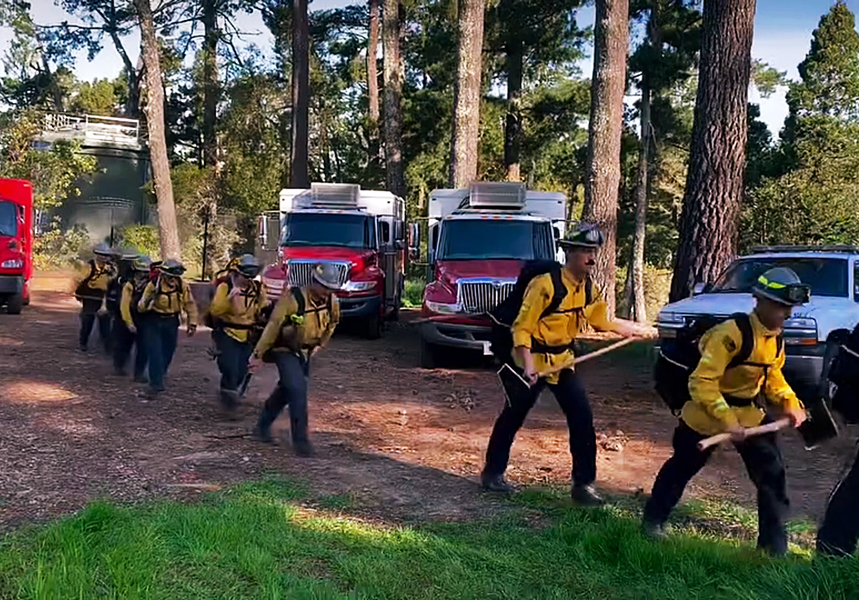Low-intensity fires will help lessen risk on Mount Diablo

CONTRA COSTA COUNTY, CA (Apr. 22, 2024) — In a move that makes good on a promise made decades ago, California State Park officials are planning to ease wildfire concerns by using fire on Mount Diablo – intentionally.
If all conditions are right, the district will take the first steps this spring to reduce fire risk to the region.
Burning piles of carefully placed vegetation and small strategically chosen areas of grassland will be the start of a long overdue return to an era without high severity megafires.
Hearing the words fire and Mount Diablo in the same sentence has firefighters looking grim, nearby residents throwing nervous glances in that direction and emergency managers responsible for evacuations patting their pockets to check for their phones. With good reason. Most of the large wildfires of recent decades in Contra Costa County have either been inside the boundaries of Mount Diablo State Park or in its surrounding foothills, known collectively as the Diablo Range.
Sound Native American land management
It comes as no surprise to anyone in California that wildfires are a top concern in many communities. The devastating fires of recent decades have taken lives, destroyed towns and are making getting or keeping insurance policies difficult for much of the state.
What may come as a surprise to many, especially those not immersed in fire as a profession, is that the problem is not too much fire – but not enough fire.
Prior to European colonization, Native Americans managed the land for thousands of years, extensively with fire. They burned at least 4 million acres every year. The only modern equivalent was 2020, referred to as the “worst” fire year in modern history.
The millions of acres the natives burned bear little resemblance to the mega fires in recent years. Their regular use of fire kept the understory of forests open and clear, preventing the accumulation of brush and low branches that firefighters refer to as “ladder fuels” that can ignite tree canopies and destroy whole forests.
The arrival of European settlers brought a halt to the Native Americans practices of land management, but it did not stop the growth of vegetation – which has continued to accumulate for more than 100 years. Mount Diablo, along with much of the West, is in a state of fire deficit, and the bill has come due.
New policies mean a return to burns
Some land agencies have been using prescribed fire as a management tool in recent years, with great results. The John Muir Land Trust, in collaboration with the Moraga Orinda Fire District and other fire agencies, has held prescribed burns on the Painted Rock property several times. The East Bay Regional Park District also uses prescribed fire as a management tool, and other state parks have had successful burns in recent years.
These low-intensity fires serve the dual purpose of lessening the fire risk to adjacent communities by reducing accumulated vegetation and removing invasive plant species so native species can thrive again. From pinecones that need the heat of a fire to open to wildflowers that only bloom after a fire, many native species in California depend on fire.
Officials carefully plan low-intensity prescribed fires to minimize smoke impacts to communities. They monitor weather forecasts, and the Bay Area Air Quality Management District must approve all fires.
The use of prescribed fire plays such an important role in reducing the risk of high-intensity wildfire and the health impacts of those large fires, that the American Lung Association supports the use of prescribed fire.
These new programs mark the beginning of the path to safer communities and a more beautiful mountain.
Susanna Thompson is a fire commissioner with the Contra Costa Fire Protection District and has a bachelor’s degree in wildfire science and the urban interface. Contact her at sthompsonmcr@gmail.com.
